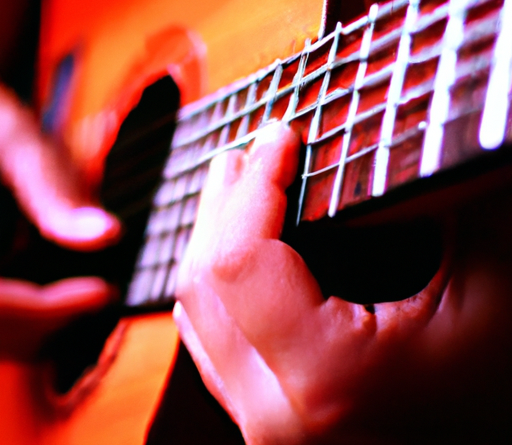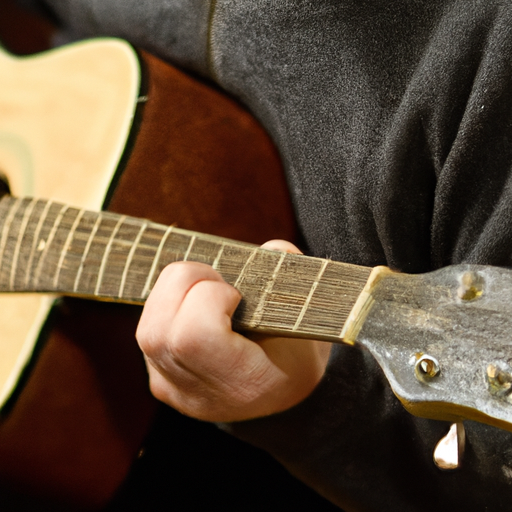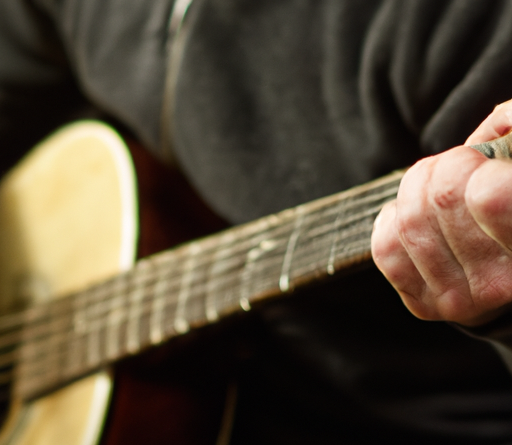
Have you ever wondered how to play the guitar? It’s a versatile instrument that can bring so much joy and creativity into your life. Whether you’ve never picked up a guitar before or you’ve dabbled a bit but want to improve, you’ve come to the right place. In this article, we’ll give you a beginner’s guide on how to play the guitar and provide you with some helpful tips and tricks to get you started on your musical journey.
playing the guitar may seem intimidating at first, but with some patience and dedication, you’ll be strumming along to your favorite songs in no time. We’ll cover the basics, such as how to hold the guitar, the different parts of the instrument, and how to tune it. We’ll also delve into the world of chords, teaching you some essential ones that will enable you to play a wide range of songs. Additionally, we’ll discuss fingerpicking techniques, alternate tunings, and even some basic music theory to help you understand how it all comes together.
So, if you’ve got that burning desire to learn how to play the guitar, get ready to embark on a musical adventure. Whether you dream of serenading your loved ones, jamming with friends, or performing on stage, our comprehensive guide will equip you with the foundational knowledge and skills to get you started. Stay tuned for our upcoming articles, where we’ll dive deeper into specific topics to expand your guitar-playing repertoire. Get ready to strum away your worries and explore the wonderful world of music-making.
Table of Contents
How to Play Guitar
Choosing the Right Guitar
choosing the right guitar is the first step on your journey to becoming a guitarist. There are two main types of guitars to consider: electric and acoustic. Electric guitars have a solid body and require an amplifier to produce sound, while acoustic guitars produce sound naturally without the need for additional equipment.
When deciding between electric and acoustic, think about the style of music you want to play. Electric guitars are commonly used in rock, metal, and pop genres, while acoustic guitars are versatile and can be used in a variety of genres including folk, country, and blues. Consider the sound you want to achieve and the type of music you enjoy playing before making your decision.
Another important factor to consider when choosing a guitar is your budget. Guitars come in a wide range of prices, so it’s essential to determine how much you’re willing to spend. Keep in mind that more expensive guitars often have better construction, materials, and sound quality. However, there are also great options available for beginners or those on a tighter budget. Do some research, read reviews, and try out different guitars to find the one that suits your budget and preferences.
Lastly, you should try different neck styles to find the one that feels comfortable for you. Guitars come with different neck shapes and sizes, and this can greatly impact your playing experience. Some necks are thicker, while others are thinner, and the shape can vary as well. It’s essential to hold different guitars and play them to see which neck style feels the most natural and allows for easy finger placement. Remember, comfort is key when it comes to playing the guitar for long periods of time.
Learning the Basic Techniques
Once you have chosen the right guitar, it’s time to start learning the basic techniques. Whether you’re a complete beginner or have some experience, mastering the fundamentals is crucial for building a solid foundation.
The first technique to master is holding the guitar correctly. Make sure that the body of the guitar rests comfortably on your leg, and that the neck is at a slight angle upwards. Keep your back straight, relax your shoulders, and ensure that your left-hand fingers can easily reach the frets. Use your right arm to strum or pluck the strings, finding a position that allows for maximum control and ease of movement.
Tuning your guitar is another essential skill to learn. Even the most expensive guitar will sound off if it’s not properly tuned. Invest in a reliable guitar tuner or use online resources to ensure that your instrument is in tune. Understanding tabs and chords is also important as they are the foundation for playing songs. Tabs show you where to place your fingers on the fretboard to play specific notes, while chords are a combination of notes played together to create harmony. Spend time learning and practicing these basic techniques to set yourself up for success.

Mastering the Essential Chords
As you progress in your guitar journey, you will come across chords more and more frequently. Chords are the building blocks of songs and mastering them will allow you to play a wide range of music.
Start by learning major and minor chords. Major chords are typically happy and uplifting, while minor chords create a more melancholic or sad sound. Practice transitioning between different major and minor chords, ensuring that each note sounds clear and that your fingers are positioned correctly. Barre chords are another group of chords that are worth mastering. Barre chords are moveable shapes that allow you to play any major or minor chord up and down the fretboard. They require pressing down multiple strings with one finger, which can be challenging at first, but with practice, you’ll be able to play them effortlessly.
Open chords are the next step in expanding your chord vocabulary. These chords use some open strings and are often easier to play than barre chords, especially for beginners. Experiment with different open chord shapes and learn how to transition smoothly between them. This will open up a whole new range of possibilities for playing songs and accompanying your singing or other instruments.
Improving Your Strumming
Having a solid strumming technique is essential for bringing your guitar playing to life and adding rhythm and groove to your songs. It’s important to develop a steady rhythm by practicing with a metronome or playing along with music recordings.
Start by practicing different strum patterns using basic chords. Experiment with different combinations of downstrokes and upstrokes, varying the speed and intensity. Strumming patterns can greatly change the feel of a song, so it’s important to explore different options and find what works best for the music you are playing.
Adding dynamic accents is another way to enhance your strumming technique. Play some strums louder or softer than others to create contrast and make your playing more expressive. This can be achieved by using different parts of your hand, like the flesh or nails, or by adjusting the pressure you apply to the strings.

Playing Melodies and Solos
Playing melodies and solos on the guitar can be both challenging and rewarding. With practice and determination, you can develop your skills in this area and start creating captivating guitar solos.
Understanding guitar scales is essential for playing melodies and solos. Scales are a series of notes played in a specific pattern, and they provide the foundation for melodies. Familiarize yourself with common scales like the major scale, minor scale, and pentatonic scale. Practice playing these scales up and down the fretboard, ensuring that each note sounds clear and that you’re using the correct fingering.
Tabs are a valuable resource when learning solos. Tabs indicate which frets to play on which strings, allowing you to recreate solos note by note. Spend time studying tabs for your favorite songs and solos, analyzing the patterns and techniques used by the original guitarist. This will help you understand the structure of solos and how to recreate them accurately.
Experimenting with bends and vibrato is another aspect of playing melodies and solos. Bends involve bending a string either upwards or downwards to reach a higher or lower pitch. Vibrato is a technique used to add a subtle, controlled fluctuation in pitch to a sustained note. Both bends and vibrato can add emotion and expressiveness to your playing, allowing you to make each note truly sing.
Developing Fingerpicking Skills
Fingerpicking is a versatile technique that allows you to create intricate melodies, harmonies, and rhythms simultaneously. Whether you want to play folk, country, classical, or fingerstyle arrangements of popular songs, developing fingerpicking skills is essential.
Start by mastering basic fingerpicking patterns. These patterns involve using your thumb to pluck the lower strings and your other fingers (usually the index, middle, and ring fingers) to pluck the higher strings. Practice these patterns slowly and accurately, gradually increasing the speed as you become more comfortable.
Once you’ve mastered the basics, you can move on to more advanced fingerstyle techniques. This includes incorporating thumb independence, playing bass lines, and adding percussive elements by tapping the body of the guitar. With time and practice, you’ll be able to play complex fingerstyle arrangements that sound impressive and captivating.
Understanding Music Theory for Guitar
While it’s possible to play the guitar without extensive knowledge of music theory, understanding the basics can greatly enhance your playing and allow you to communicate with other musicians more effectively.
Start by learning the basics of music notation. This includes understanding the staff, notes, and rhythms. Familiarize yourself with common symbols and terms used in sheet music to make reading and understanding music easier.
Understanding key signatures and scales is another crucial aspect of music theory. A key signature indicates the key in which a song is written and the scales that are used within it. Learning different scales within each key will help you improvise and compose melodies that work harmoniously within a given key. Spend time practicing scales in different positions and keys to expand your musical palette.
Exploring chord progressions is the next step in understanding music theory for the guitar. Chord progressions are a sequence of chords that create a particular mood or atmosphere. Learning common chord progressions in different genres will allow you to play songs more intuitively and create your own progressions.
Playing Different Genres
The guitar is a versatile instrument that can be used to play a wide range of genres. Whether you prefer rocking out to heavy metal, getting lost in the blues, or strumming along to some folk and country tunes, there’s a genre for everyone.
For rock and metal genres, mastering power chords, palm muting, and alternate picking is essential. These techniques will help you create heavy, distorted sounds and play fast-paced guitar riffs. Experiment with different effects pedals and amp settings to achieve the desired tone.
Blues and jazz genres heavily rely on improvisation and playing with feel. Learning the blues scale, bending techniques, and incorporating chromatic notes will give your playing a bluesy edge. In jazz, chord voicings, arpeggios, and understanding of complex harmony are key. Spend time listening to blues and jazz recordings to familiarize yourself with the style and develop your own improvisational skills.
For folk and country genres, mastering open chords, fingerpicking, and strumming patterns is crucial. These genres often tell stories through their music, and the guitar plays a significant role in creating a warm and inviting atmosphere. Experiment with different tunings and playing styles to discover your own unique sound within these genres.
Recording and Performing
Once you’ve developed your skills on the guitar, you may want to take your playing to the next level by recording your music or performing live. Both recording and performing require additional knowledge and preparation.
Setting up your gear for recording involves learning about microphones, audio interfaces, and software. Research different recording techniques and experiment with microphone placement to capture the best sound. Take advantage of the technology available to create professional-quality recordings from the comfort of your own home.
Understanding live sound equipment is crucial if you plan on performing in front of an audience. Learn about PA systems, mixers, and monitors to ensure that your sound is balanced and clear. Practice performing in front of others to build confidence and improve your stage presence.
Preparing for performances also involves rehearsing your setlist, selecting appropriate songs, and practicing transitions between songs. Remember to engage with the audience, exude confidence, and enjoy the experience of sharing your music with others.
Conclusion
Learning to play the guitar is a rewarding journey that takes time, dedication, and practice. By following the steps outlined in this article, you’ll be well on your way to becoming a skilled guitarist. Remember to choose the right guitar, master the basic techniques, practice essential chords, improve your strumming, play melodies and solos, develop fingerpicking skills, understand music theory, explore different genres, and prepare for recording and performing. Enjoy the process, experiment with different styles, and never stop learning. Happy playing!



